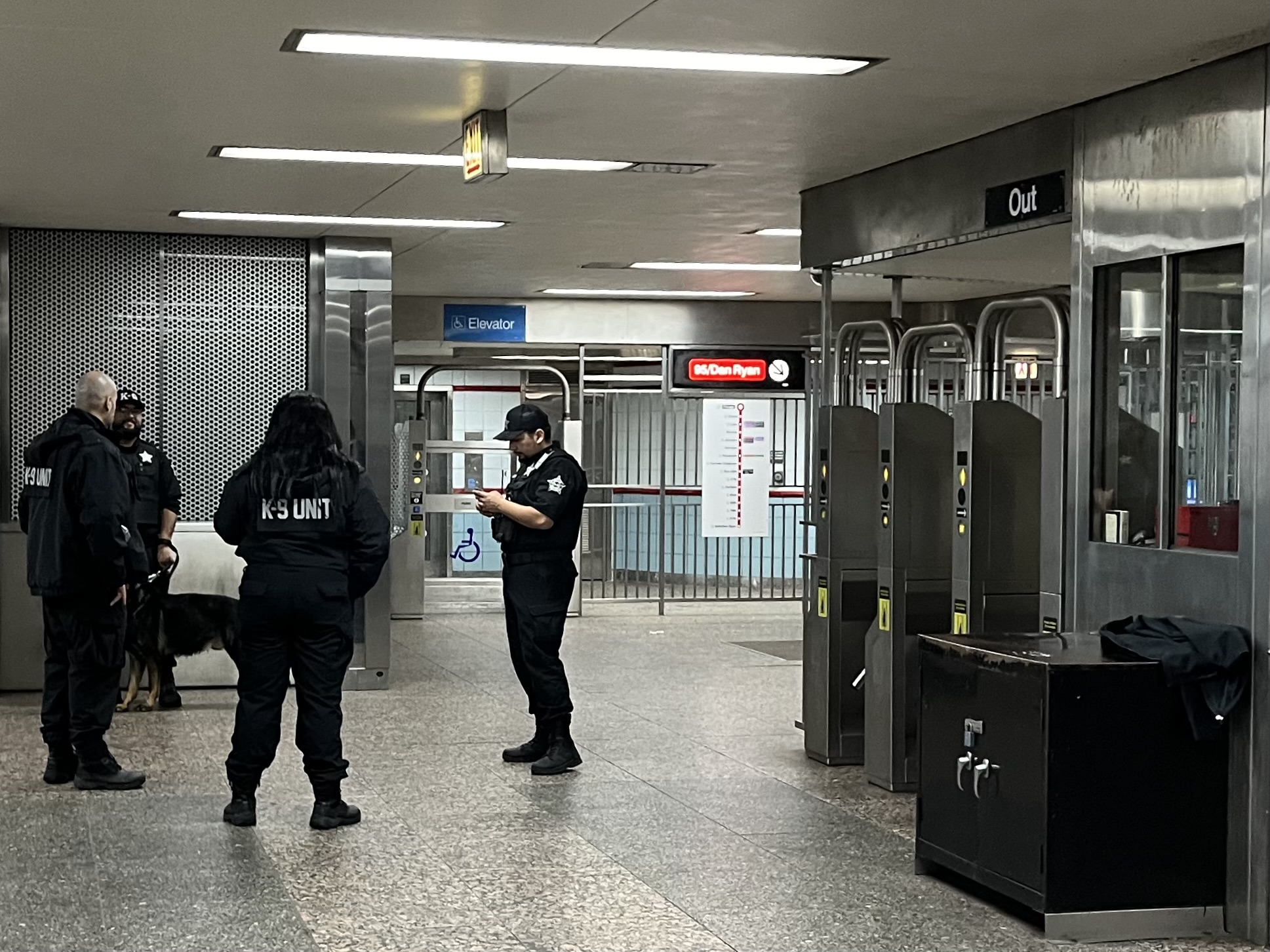
On Wednesday, the CTA board adopted the transit agency's $2.16 billion 2025 CTA budget, with one notable change directly related to the growing concerns about the effectiveness of the system's use of private security guards.
Out of $88.47 million budgeted for security services next year, $3.3 million was set aside for soliciting public input to develop future pilot programs with the goal of reducing crime and making the CTA safer. At yesterday's meeting, embattled agency President Dorval Carter Jr. told the board the change was made within the last "24 to 48 hours." Spokesperson Catherine Hosinski later said it's too early to even give any examples of what this pilot might entail, but added that the format of the pilot would be shaped by feedback by riders and residents in general.
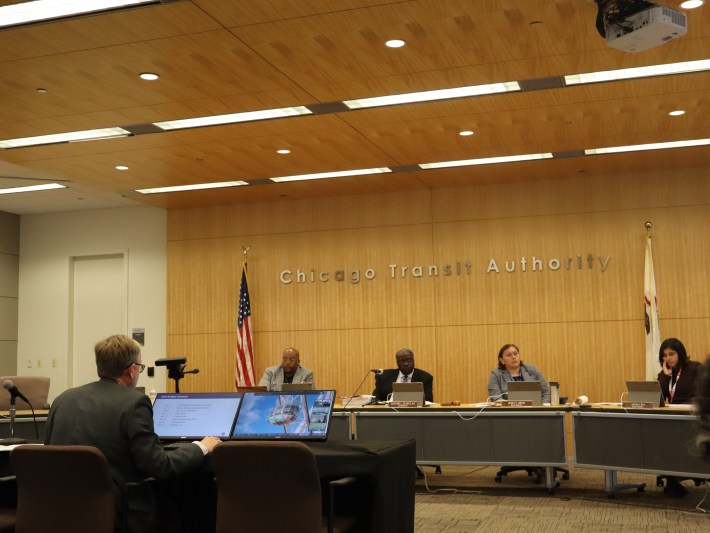
The shift comes after the October board meeting, when several directors questioned whether the agency is getting its money’s worth from the private security companies, and pushed for the agency to consider other approaches. Public transportation advocates also commented on this issue during last week’s public meeting on the budget.
While board members welcomed the $3.3 million earmark announced yesterday, they weren't totally satisfied with the 2025 security plan.
Yesterday's meeting also saw the CTA approve a two-year, $2 million a year contract extension with the Chicago Department of Family and Support Services to provide services for riders experiencing homelessness. DFSS subcontracts with the nonprofits Thresholds and Haymarket Center to provide services on the Red and Blue lines, respectively. Several board members have praised this arrangement as an alternative to security guards as a strategy to improve safety on the 'L' system.
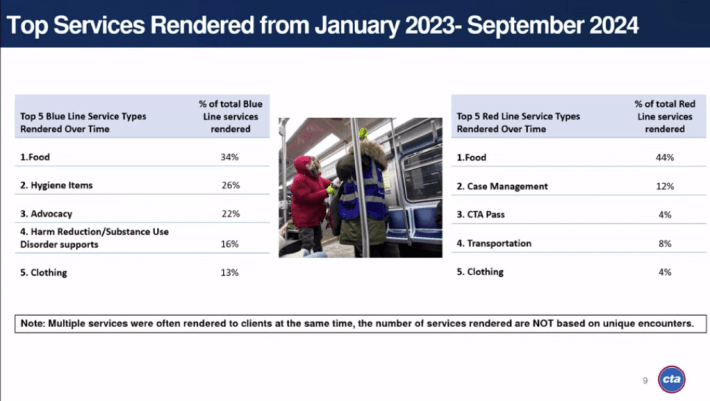
Also yesterday, the agency announced planned changes to the Clark/Lake station in the Thompson Center, which is currently being converted into Google's Chicago headquarters.
Discussion of the security budget
CTA Chief Financial Officer Tom McKone told the board that the final 2025 budget increased expenses by about 8 percent compared to last year. He said that 4 percent of that comes from wage increases, and another 4 percent comes from service increases. McKone added that ridership was increasing faster than projected. While the 2024 budget projected that the number of bus and train rides would reach 70 percent of pre-pandemic numbers, it is currently at 78 percent, and he said he expects it to reach 80 percent by the end of the year.
Hosinski said the security budget includes contracts with private security companies, as well as the money the CTA pays off-duty Chicago police officers to patrol the system.
Board member L. Bernard Jakes asked for more details about how the $3.3 million would be used. Carter replied that once there are more details, he will share them with the board before implementation. "I commit to you that we will put that together, present that to the board, and get the board input about that approach before we execute on it,” he said. “I don’t have the answer today.”
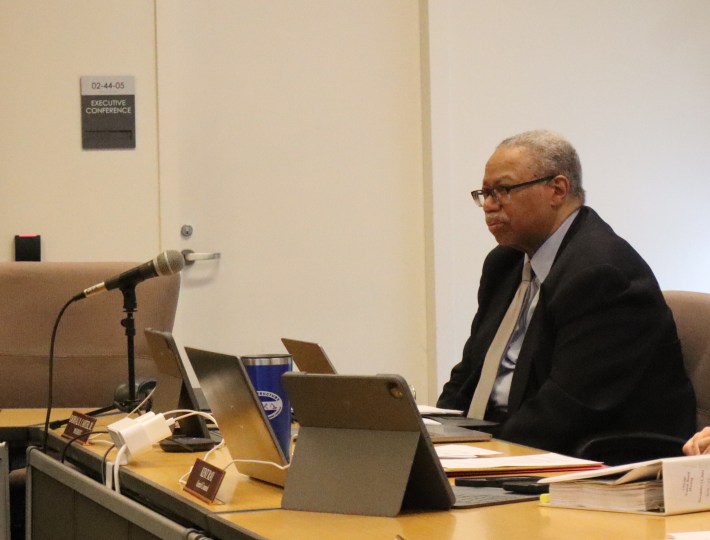
Director Rosa Ortiz argued that community organizations should be part of the decision-making process. Carter responded that, since the board is responsible for approving budgets and major expenses, "It’s a board decision. You’re not going to be able to ask someone else to make the decision for you," he said.
Jakes also asked whether "the security team is taking a look at what’s working and what’s not working and striking what’s not working." Carter didn’t directly answer that question. "No one figured out the solution to the problem," he stated. "Having said that, we’re open to new strategies, open to the new approaches." He added that there was no reason the CTA couldn’t move some more money out of security services, if necessary.
During the October board meeting, Board Chair Lester Barclay advocated for increasing the number of police officers in the system. But Ortiz argued that may not be the best solution, especially in communities of color. They reiterated their positions during yesterday’s meeting.
Jakes argued that there shouldn’t be a one size fits all approach to public safety on the CTA, suggesting that police officers may be useful in some cases, but "violence interrupters" might be more helpful in other situations. "Uniformed officers make some comfortable, but not everyone," he said.
Director Neema Jha said that the board shouldn’t be making those kinds of decisions blindly. "What we're asking for [is], give us enough information where we feel good about making decisions," she said. "What is your success criteria? How do you define the key metrics?"
Homeless services contract
The current arrangement with DFSS grew from two pilots that kicked off in the winter of 2023. McKone said that the CTA wanted to do a two-year extension this time because the agency has been pleased with the service providers’ work and they wanted to give Haymarket and Thresholds employees some financial stability. He noted that the Thresholds contact only covers the night shift. The nonprofit funds the day shift from other sources.
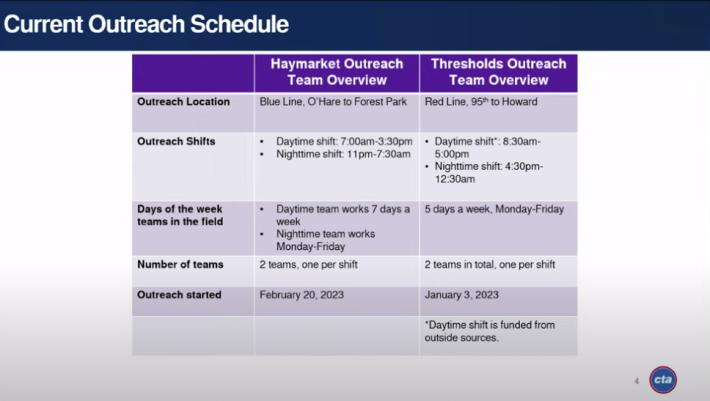
According to the federal Point in Time Count, the annual survey of the unhoused population that every U.S. municipality is required to conduct, around 46 percent of the estimated 18,836 homeless people in Chicago take shelter on CTA trains or buses.
McKone said that in the past year, the nonprofits were able to place 240 unhoused CTA riders in shelters and get 140 into stable housing. The main obstacle is the availability of shelter beds and housing in the city. "What we hear from the agencies, and we noted in this [report] is there's a far greater demand for shelter than is available," he said, "[The above numbers] underestimate the amount of folks who would probably be willing to take shelter."
Board member Roberto Requejo asked whether the CTA could address the shortage of beds and supportive housing by teaming up with local service providers to build supportive housing on CTA property. "We actually don’t have a whole lot of holdings that aren’t already being used for infrastructure," Carter replied, adding that state law limits how the agency can use properties it does have. But he said that it would be productive to work with service providers to consider creating housing on properties near CTA stations. "Those are positive goals we want to continue to pursue," he said.
The fiscal cliff
It wasn’t lost on board members and officials that this 2025 budget is the last one where they can use pandemic-era federal stimulus money to fill funding gaps. A $730 million total budget gap is projected for the CTA, Metra, and Pace in 2026. Jakes wondered if it makes sense to start cutting services now, in case proposed additional state funding doesn't materialize.
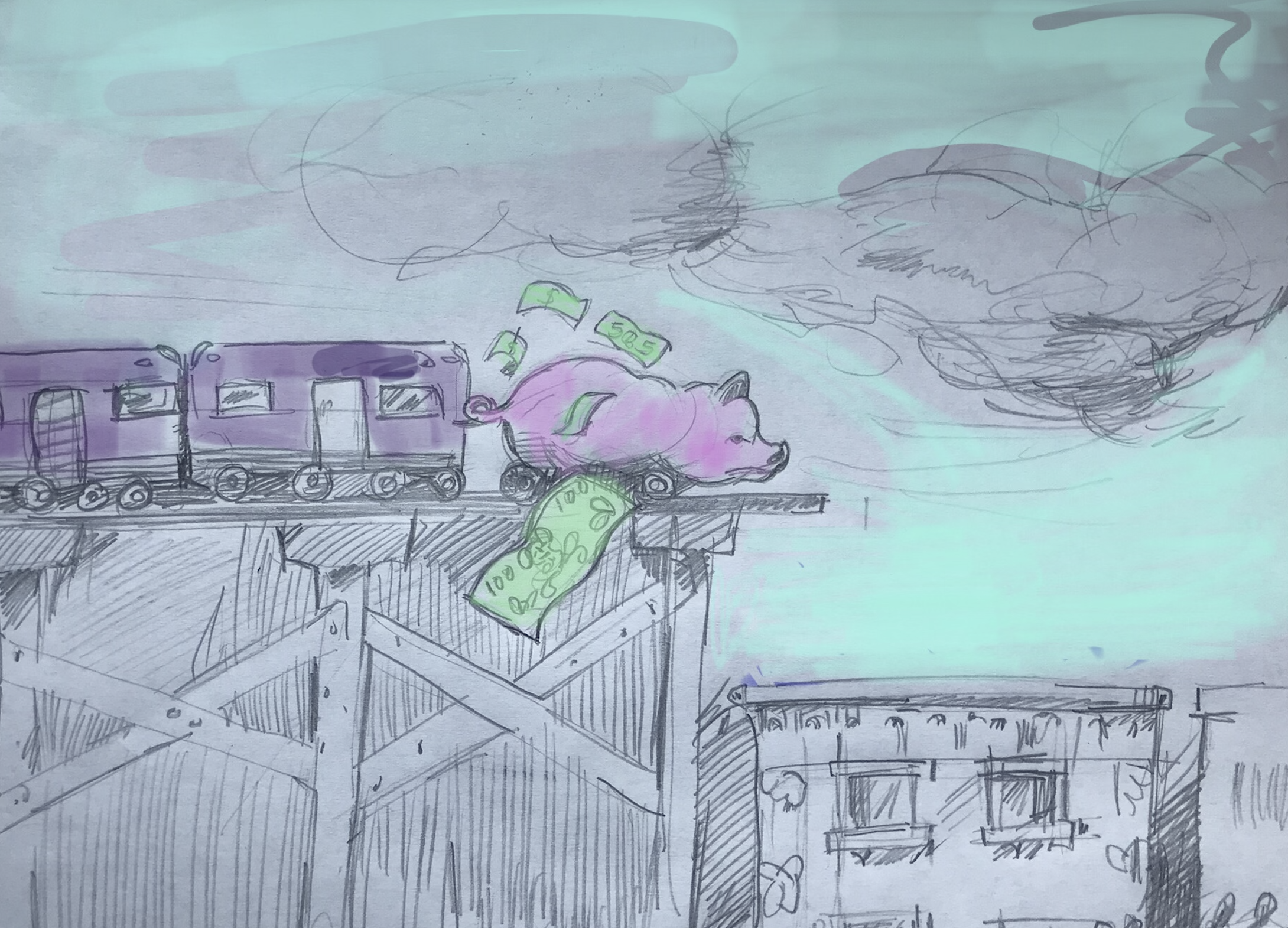
"Are we being [too] aggressive in making sure that we are hiring more people, that services are where they should be pre-pandemic level, only to have to backpedal in the future?" he asked. "Because we don't know what Springfield is going to do. I don’t believe Illinois is going to be one of the incoming president’s favorite states, which may [affect] federal dollars."
Carter responded that the increase in serve has led to more ridership. He added that he is optimistic that there would be a funding solution from the state, even if he can’t speak to exactly what that might look like. "We can make the case that the obligation of the government to adequately fund public transportation is tantamount to other things we view as important, be it healthcare, education or housing," he added. "We can't afford to lose that fight. I don’t even want to imagine what the next year would be like if we do."
But the board wasn’t satisfied with the response. Barcley asked for reports on how CTA’s lobbying of state legislators has been going. "Are we making progress, are we making headway?" he said. "If not, we need to know that."
"I can’t tell you what the solution will be, if we get everything we need, because that’s still being discussed," Carter replied.
Requejo argued that CTA demonstrating that it is transparent and is "looking for partnership, looking for feedback," instead of being an "opague" agency that "doesn’t respond," would go a long way towards winning the state funding. "To me, the future of CTA and the future of our asks to Springfield and the future of our city is tightly connected to how we show up."
Changes to the Clark/Lake station
CTA and JRTC holdings, the company that’s renovating the Thompson Center for Google, agreed to move the main entrance of the elevated section of the Clark/Lake station to the northeast corner of Clark and Lake streets, where the auxiliary exit is currently located. The stop serves Loop elevated trains, as well as the Blue Line subway.
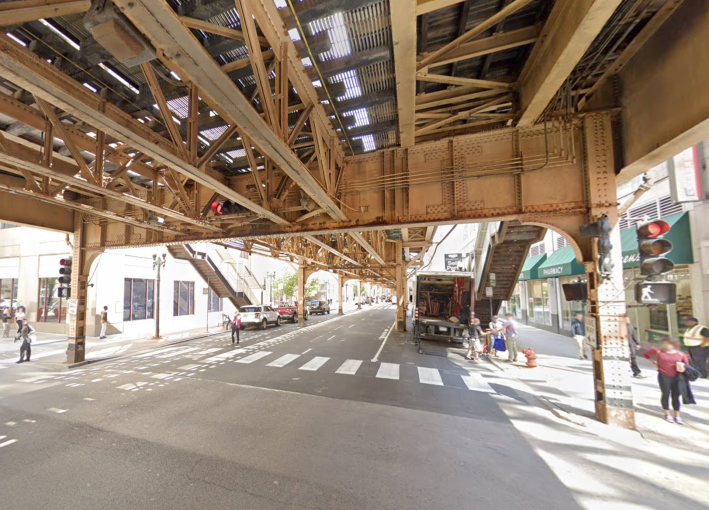
The station's main entrance is currently at the north side of the Thompson Center on Lake west of Clark. It can be used to access the underground Blue Line section and the elevated Loop section’s south platform, where Purple Line Express, Pink and Orange trains, and southbound Green Line trains currently stop. There’s also a second entrance to the station in the 203 N. La Salle Building on the north side of Lake, which you can use to assess the Blue Line and the north elevated platform, where outbound Brown Line and westbound Green Line trains stop.

It isn’t entirely clear what will happen to the existing Thompson Center entrance. According to the CTA, riders will be able to access the building the way they used to be before the renovations started, but they will no longer need to go through it to access the platforms.
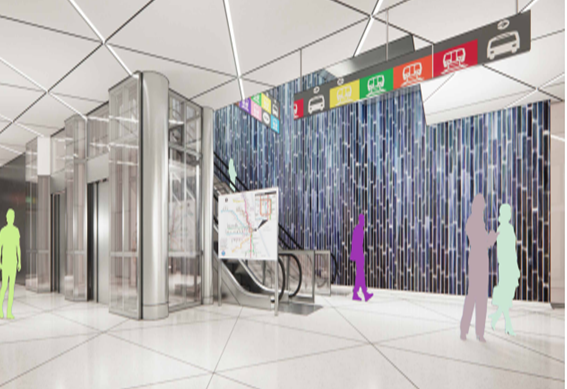
Work on the new entrance is expected to begin in November 2025. Other station and platforms renovations to better harmonize the CTA facility with the revamped Thompson Center are slated for completion in the second half of 2026.
Here are some CTA press releases on the recent developments:
"Chicago Transit Board Approves CTA’s 2025 Budget"
"CTA Signs New Two-Year Agreement for Expanded Social Service Outreach Following Successful Pilot"
The CTA Announces Plans for Major Changes at the Clark/Lake Loop Elevated Station
